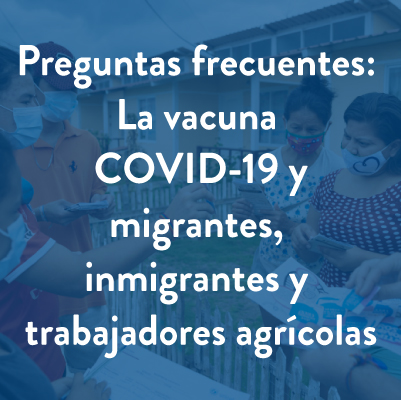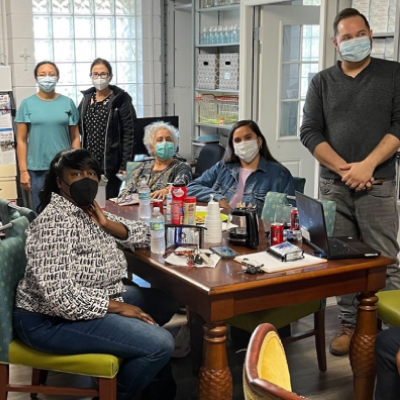- Who We Are
- Clinician Employment
- Publications
- Witness to Witness (W2W)
- El Premio Kugel & Zuroweste a la Justicia en la Salud
- Your Voice Matters: Photovoice Project
Wed, 07/22/2015 | by Edward Zuroweste

By Dr. Ed Zuroweste, MD, Chief Medical Officer, and Claire Hutkins Seda, Writer & Editor
[Editor’s note: This is the third in a series of blog posts exploring the health needs of the unaccompanied children and mothers with children who arrived at the US-Mexico border seeking asylum during last year’s ‘border surge.’ Subscribe to our blog to receive notification of all future posts.]
In 2014, an unprecedented 63,000 unaccompanied children arrived at the US/Mexico border. It is estimated that an additional 39,000 children will have arrived when the year is up -- the second highest number in history. Many are fleeing gang violence, political instability, and high levels of poverty in Central America. As a result, many of these children have not experienced a normal childhood. But the trauma does not end when they leave their country. The trip across a thousand miles in Mexico presents its own dangers, and accounts of kidnapping, human trafficking, and other violence during the journey are widespread.
The children and mothers who have arrived at the border generally fall into three categories. If a mother with her child or children is detained, the family is most likely sent to one of the US Immigration and Customs Enforcement’s family immigration centers, such as the South Texas Family Residential Center in Dilley, TX. New Homeland Security policy may result in the release of some of these families, but the timeline and eligibility requirements for release are unclear. (Dr. Luis Zayas describes his experiences as a child psychologist visiting the Dilley and Karnes facilities, in the first installment of this series, here.) If a child arrives unaccompanied by a family member and does not have any family members in the US, he or she eventually may enter the foster program specifically set up for these youth asylum seekers. (Dr. Ileana Ponce-Gonzalez tells her story of fostering one of these children, in the second installment of this series, here.)
Many of the children who have arrived at the US/Mexico border fall into the third category: They are without an adult at the time of apprehension by border authorities, but they have immediate family members already in the US with which they hope to reunite. In this case, the family members -- parents, siblings, grandparents, aunts or uncles, etc. -- may apply to be a sponsor of the child through the Office of Refugee Resettlement (ORR), a division of the US Department of Health and Human Services. These children are often released to their sponsor.
On June 4th, 2015, Ed Zuroweste, MD, Migrant Clinicians Network’s Chief Medical Officer, headed to Washington, DC for an American Academy of Pediatrics-sponsored discussion of the border surge and its health effects on the involved immigrant children, entitled, “Caring for Immigrant Children: Multi-Sector Service Coordination.” Several speakers presented the specific health needs of these children from different professional perspectives. Here, we present some of the key takeaways from the meeting that are relevant to clinicians, as well as tools and resources to assist clinicians in best identifying and serving immigrant children who arrived in the US during the border surge.
IN THE EXAM ROOM
As more and more immigrant children arrive at the border and are placed in sponsors’ homes across the country, more children from the border surge will be arriving in the exam room. Here we present a checklist for clinicians, to best serve unaccompanied children who may arrive as your new patient. This material is based on the presentations at the AAP-sponsored meeting.
1. Identify Unaccompanied Children: During patient intake history, it is essential that clinicians identify patients who arrived as unaccompanied children. Their circumstances may require additional or different medical attention than the typical immigrant. Key questions to ask include: How old were you when you crossed the border? Were you caught at the border? Who were you with? Where were you sent?
2. Get Basic Health Information: Once a patient is identified as an unaccompanied child, the attending clinician may request health records on the patient from the ORR here. Determine whether the patient intends to move again -- he or she may be eligible for enrollment in MCN’s bridge case management program, Health Network.
3. Provide Basic Primary Care and Resources Information: As some sponsors may not have experience caring for a young child (for example, if a child is placed with an aunt who does not have any children herself), clinicians are encouraged to inform the family of the importance of regular primary care, of the concept of the patient-centered medical home, and of the resources available to the family, in the arenas of: routine exams and screenings to assess development, nutrition and growth, and vision and hearing; oral health; school readiness; and, sexuality and sexual health.
4. Barriers to Affordable Care: Children who have been placed with sponsors do not have residency status and are ineligible for health care coverage in many parts of the country. Medicaid and CHIP requirements vary from state to state. Federally-qualified Health Centers are one of the few places these immigrants may turn for affordable care. Additional barriers to care include fear of deportation, language barriers, and cultural barriers.
5. Common Mental Health Concerns: Unaccompanied children may have experienced pre-, peri-, and post-migration trauma, which may lead to increased mental health conditions like post-traumatic stress disorder (PTSD), depression, anxiety, and adjustment disorders. Periodic reassessment is encouraged, as initial excitement upon being placed with family members in the US may wane.
6. Common Social Concerns: A new family structure, a new culture and language, a new school environment -- these are just a few of the potentially stressful and difficult challenges that an unaccompanied child may face. Their home may be overcrowded or their family may be experiencing financial instability with the addition of another member. Family dynamics between the sponsor and the unaccompanied children may be an additional source of stress. Ask about their home life and fill out the full picture of their new reality.
MEDICAL-LEGAL PARTNERSHIP
None of the unaccompanied children are guaranteed legal services. Despite incredible efforts by pro-bono services or organizations like Catholic Charities to provide attorneys, a high percentage of children remain without legal representation. Appallingly, unaccompanied children who have not secured legal help must argue their asylum cases before a judge alone -- without the help of their sponsor. This has resulted in young children representing themselves in the courtroom. There are still not enough legal services to provide for the legal needs of all of the unaccompanied children.
Statistics from adult asylum cases indicate that a medical evaluation is an important part of an effective legal case. Eighty-nine percent of granted adult asylum cases had an associated medical evaluation. For unaccompanied children, health evaluations are critical in documenting trauma, maltreatment, or other circumstances that may enhance the patient’s legal case. According to the meeting’s presentation, clinicians serving unaccompanied children may:
- Uncover histories not revealed to lawyers;
- Identify medical and mental health conditions;
- Facilitate communication with attorney;
- Improve ability to testify in court; and
- Provide professional letters of support.
CONCLUSION: CARING CLINICIANS ARE KEY
Clinicians who are caring for recent immigrants to the US must always spend the extra time required to allow these individuals to tell their story. Only with this vital information can the clinician provide, not only immediate care for any untreated illness and basic primary care, but also access to appropriate referral for legal representation. Expert legal aide could make all the difference in world for whether this individual will be afforded a “safe haven” in the US or will be returned to a potentially life-threatening situation in his or her country of origin.
RESOURCES
- MCN’s Profile of Marsha Griffin, MD, a leading physician focused on unaccompanied children’s health needs.
- AAP Toolkit: Guidelines for Immigrant Health Care
- Bright Futures/AAP: Guidelines for Health Supervision of Infants, Children and Adolescents, 3rd Edition
- Kids in Need of Defense (KIND)
- The Young Center
Support our work: Please consider making a donation to MCN support health justice for the mobile poor. Be sure to follow MCN on Facebook and Twitter.
Support our work: Please consider making a donation to MCN to support health justice for the mobile poor. Be sure to follow MCN on Facebook and Twitter.
Return to the main blog page or subscribe to our blog here.







